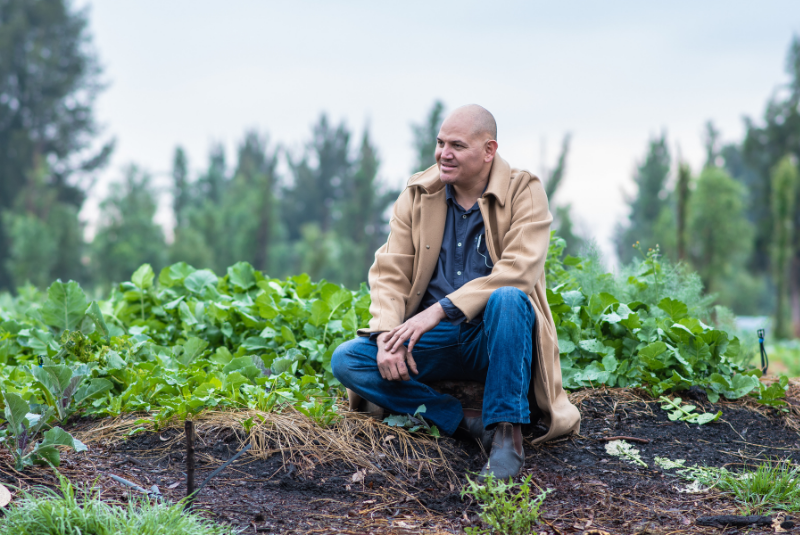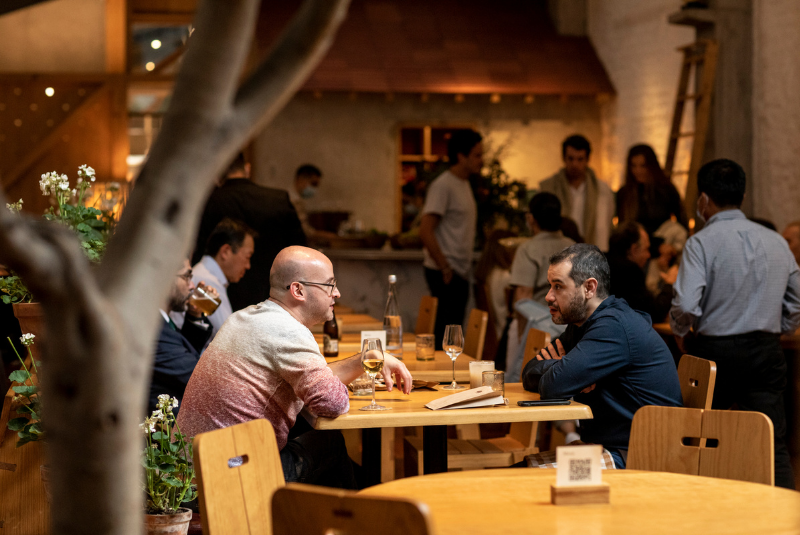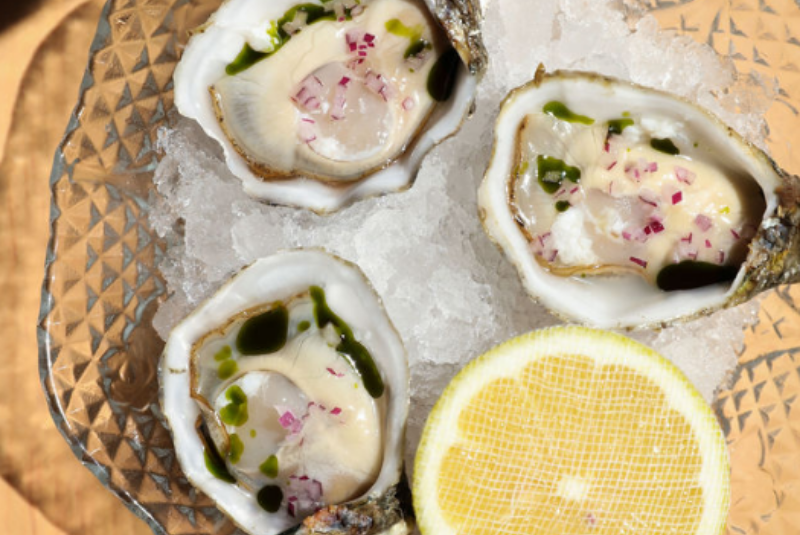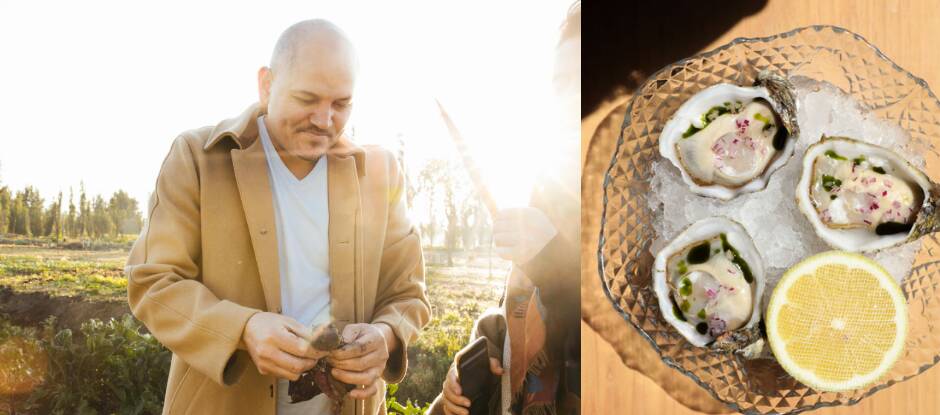Chef Eduardo ‘Lalo’ García is one of the stars of Mexico City’s diverse dining scene, with his restaurant Máximo Bistrot widely recognised for its unique brand of French-Mexican cuisine anchored in local and sustainable produce.
After moving the restaurant to a new location during the pandemic and winning the Estrella Damm Chefs’ Choice Award – Best Reinvention at Latin America’s 50 Best Restaurants 2021: Pasado y Futuro, García talks about his experiences as an immigrant, how he runs his kitchen and the role of restaurants in society
In a city as dynamic as Mexico City, it can be a challenge for restaurateurs to come up with a concept that will remain fresh and relevant over the course of time. But this is exactly what Máximo Bistrot has achieved: the early proponent of farm-to-table cuisine in Mexico has enjoyed enduring success since opening 10 years ago.
If the restaurant has been a hit among local and international visitors – having already been voted into six editions of Latin America’s 50 Best Restaurants – it is not only thanks to iconic dishes such as soft-shell crab tostadas with green macha sauce, but also to the charismatic chef who has led its expansion. Eduardo García is up there among Mexico City’s culinary super stars, although his humble character and aversion to the public eye have traditionally kept him away from the limelight.
But when the chefs of the restaurants voted into Latin America’s 50 Best Restaurants 2021: Pasado y Futuro, sponsored by S.Pellegrino & Acqua Panna, voted for him as the winner of the Estrella Damm Chefs’ Choice Award, he couldn’t refuse the honour. “This award is very important not only for me and my team, but for Mexico,” says García. “It gives recognition to our country, to our restaurants and to Mexican chefs, and ultimately it helps them. This kind of movement needs to continue in order to achieve what society needs: a world with healthier food and better, more local ingredients.”
A popular dish at Máximo Bistrot: chicken breast and jus, mashed potato and black truffle (image: Jake Lindeman)
Crossing borders for success
Máximo Bistrot has helped put Mexico on the global culinary map with its unwavering commitment to sourcing the best and freshest produce from in and around its capital, from organic chickens to Pacific scallops, creole beans to cactus leaves. García’s commitment to working closely with producers has its roots in the chef’s upbringing. “Ever since I was a child, I worked in the fields in Guanajuato, where I was born, and then in the United States, where I picked fruit and vegetables,” he recalls. “Unintentionally, what I did in my childhood became a great tool for what I do today.”
García’s family emigrated to the US when he was still a child, working as seasonal farm hands across the expanses of Florida, Georgia, Ohio and Pennsylvania. Tired of moving constantly from city to city, the chef settled in Atlanta at age 14 and got his first job in a restaurant as a dishwasher. People were quick to recognise his work ethic and drive, and two years later García was working at Eric Ripert’s acclaimed Brasserie Le Coze, where he received his culinary imprinting.
“The first cuisine I learned was French, so at Máximo Bistrot today I mix it with my own roots: things like tortillas, corn and chillies that were abundant in Guanajuato,” says García. “So our cuisine is based on local Mexican produce, with only a few key ingredients from other countries that give it that European touch.”
In 2000, after assisting his cousin with the robbery of a liquor store, the young cook turned himself in and was deported to Mexico. It was only two weeks before García’s father was diagnosed with cancer and the chef crossed the border again to be by his side. He continued working in restaurants in the US until 2007, when a new deportation brought him back to his home country for good.
Eduardo García incorporates French techniques and local Mexican produce to create his dishes
Today, he is open about the challenges he faced as an immigrant and tries hard to offer better opportunities to young cooks in Mexico. “The advice I give to all my brothers and sisters in the United States is that Mexico is just as big,” he says. “There are many opportunities in the US, but if one day you return to your country in Latin America, make sure you follow your dream, work hard and it will come true. Latin America is growing, there is work here for everyone and most importantly, there is freedom.”
Back in Mexico, the chef applied to work at Pujol – Enrique Olvera’s seminal restaurant in the capital – and honed his skills there for four years. Here, he also met his future wife and business partner Gabriela López and the couple soon decided to open a restaurant together. “Opening Máximo Bistrot was a dream,” he recalls.
“But it was not easy at all. For the first three years, I went to the market every day at half past four in the morning and worked until one AM. But I believe the company is where it is today because of those early sacrifices. It was a dream that I realised with the help of many people and most of all my wife. She manages the other side of a restaurant business that is just as important as the kitchen: numbers.”
The interior of Máximo Bistrot, located in Mexico City (image: Jake Lindeman)
Mexico first
Determined to create an environment that would inspire young Mexicans to find opportunities in their own country rather than emigrate to the US, García sought to offer fair wages at Máximo Bistrot and focused on employing local talent. After his flagship restaurant opened in 2011, the more casual spot Lalo! followed in in 2014, then Havre 77 in 2016 – all in Mexico City – with the chef’s overall team growing from four to more than 100.
Before the arrival of the pandemic, García was already planning to move Máximo Bistrot to a new, more spacious home and he refused to let the coronavirus throw a spanner in the works. “Opening a restaurant is difficult. Opening a restaurant in a pandemic is near impossible,” says García. “But the most important thing is that we are still here, standing up for the diners and for the people who want to work and want to fight to survive.”
In August 2020, the restaurant moved to an airy space in the Alvaro Obregón neighbourhood of Mexico City, with rustic wooden tables and a tree growing at the centre of the dining room. Here, the chef puts forward his vision for a healthier, more sustainable cuisine that puts Mexican produce front and centre. These days, the menu may include gooseneck barnacles (percebes) in Meunière sauce, octopus ceviche à la mexicana, or beer-braised wagyu beef tongue with mole de olla sauce and potato purée. 
Chingón oysters, served on ice and topped with lemon (image: Seo Ju)
“Restaurants have to start helping the ecosystem,” he says. “We are a big part of the problem in terms of climate change, because we burn wood, use a lot of energy and create a lot of rubbish. After the pandemic, we have a great responsibility to go more towards healthy cooking, because not understanding where our products come from is damaging us.”
With his latest accolade, García wants to spread this message and double down on his important commitments. “I am proud to have won the Estrella Damm Chefs' Choice Award. I’d like to thank my fellow chef colleagues who voted for me, it is an honour to be a part of this moment. This award is for all of us, for all the people who work in the restaurant industry. So we have to give it our all.”
Watch the video with Eduardo García:
Browse the list of Latin America’s 50 Best Restaurants 2021: Pasado y Futuro, sponsored by S.Pellegrino & Acqua Panna, on the website, and follow us on Instagram, Facebook, Twitter and YouTube for the latest news, features and videos.

